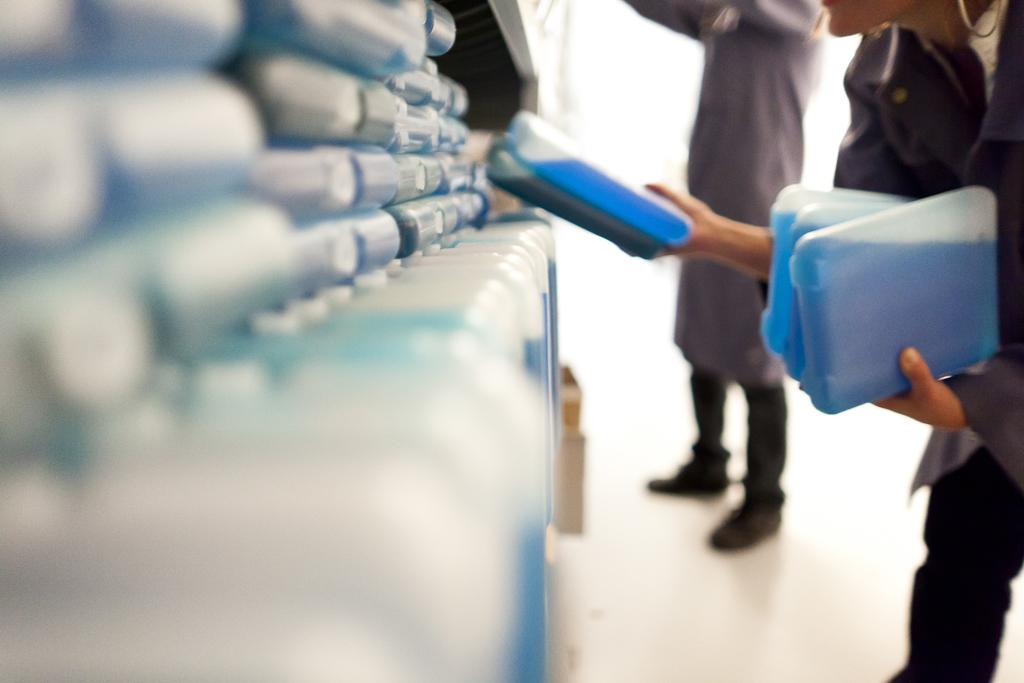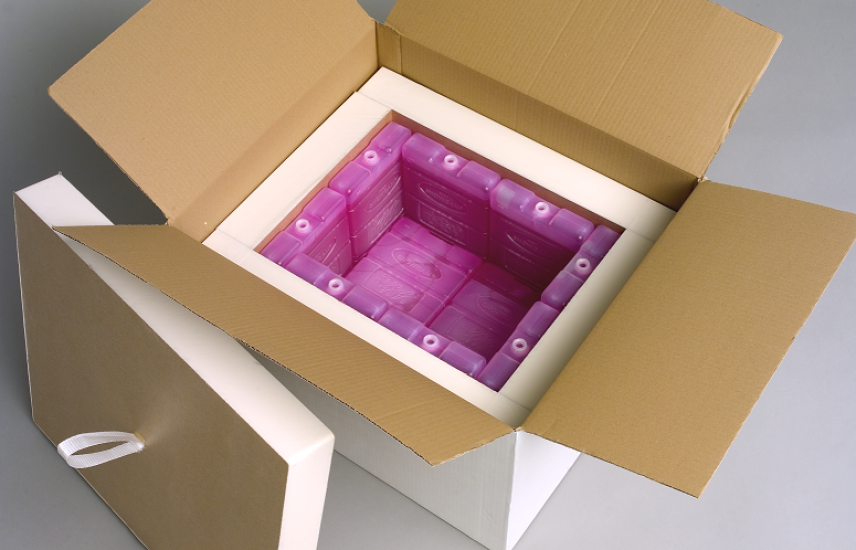How to prepare an insulated packaging?
Essential precautions for maintaining the cold chain
In order to avoid any temperature fluctuations, you must carefully follow the preparation protocol of the insulated packaging solution provided by the manufacturer: eutectic gel freezing and stabilisation times, packaging solution loading protocol, etc. These precautions help to ensure the transported products are stored correctly and avoid any risk of cold peaks.
However, to ensure a perfectly stable storage temperature, the packaging solution must be prepared according to the external temperature conditions. A packaging solution subject to negative external temperatures will not be prepared in the same way as a packaging solution shipped under hot logistical segments. Here are a few tips to guide you in how to prepare an insulated packaging solution.
Summer, winter and mid-season configurations, what is the difference?
When preparing an insulated packaging solution, you have most probably already seen that there are different configurations: summer profile, winter profile and intermediary profile. These profiles correspond to the external temperatures to which the packaging solution will be subjected to during shipment.
- Summer Configuration: corresponds to an average external temperature of more than +18 °C (24 hour, 48 hour and 96 hour standard protocol (ST) a and b profiles of the Afnor NF S99-700 standard and the 72 hour and 144 hour hot profiles of the ISTA 7E standard).
- Winter Configuration: corresponds to an average external temperature of between +8 °C and +18 °C (24 hour, 48 hour and 96 hour standard protocol (ST) c profiles of the Afnor NF S99-700 standard).
- Intermediary Configuration (mid-season): corresponds to an average external temperature of less than +8 °C (24 hour, 48 hour and 96 hour standard protocol (ST) d profiles of the Afnor NF S99-700 standard and the 72 hour and 144 hour cold profiles of the ISTA 7E standard).
How to prepare the eutectic packs for the insulated packaging solution according to each configuration?

In general, each profile will determine the preparation protocol for the eutectic packs.
- For hot profiles: the eutectic packs are frozen at a temperature below -10 °C. In some cases, the eutectic packs are stabilised at -2 °C or left at room temperature for 45 minutes to 1hour.
- For cold profiles: the eutectic packs are stabilised in a cold chamber at +5 °C.
- For mid-season profiles: the solutions combine frozen eutectic packs and others stabilised at +5 °C.
Loading the insulated packaging solution
Following the preparation protocol of the packaging solution is a prerequisite for avoiding any risk of temperature fluctuation (hot or cold). In reality, the eutectic packs are not the only thing responsible for maintaining the correct temperature in the packaging solution.
In the summer configuration for example (or hot profile), if the eutectic packs are loaded directly into the packaging solution at -2°C, they must not be placed in direct contact with the products. You must insert separation plates in the packaging solution to avoid any risk of the products freezing. Positioning the eutectic packs in the insulated packaging solution (in a ‘sandwich’ – above and below the products, or in an ‘igloo’ – all around the products) is also a key criterion which must be followed to guarantee the performance promised by the provider.
Lastly, to maintain the claimed performances, it is also necessary to take care to comply with the payload for which the insulated packaging solution was designed. If there is no cardboard grouping provided with the packaging solution to insert the products for transportation, take care to respect the height of the product or fill the empty space with cushioning materials.
The insulated packaging solution functions according to a complex heat exchange and air circulation process thoroughly studied by heating engineers. A single modification in the positioning of the eutectic packs in the packaging solution can alter the overall performance of the packaging solution.
Would you like to receive advice, support or training on the preparation of insulated packaging solutions? Contact our experts!
